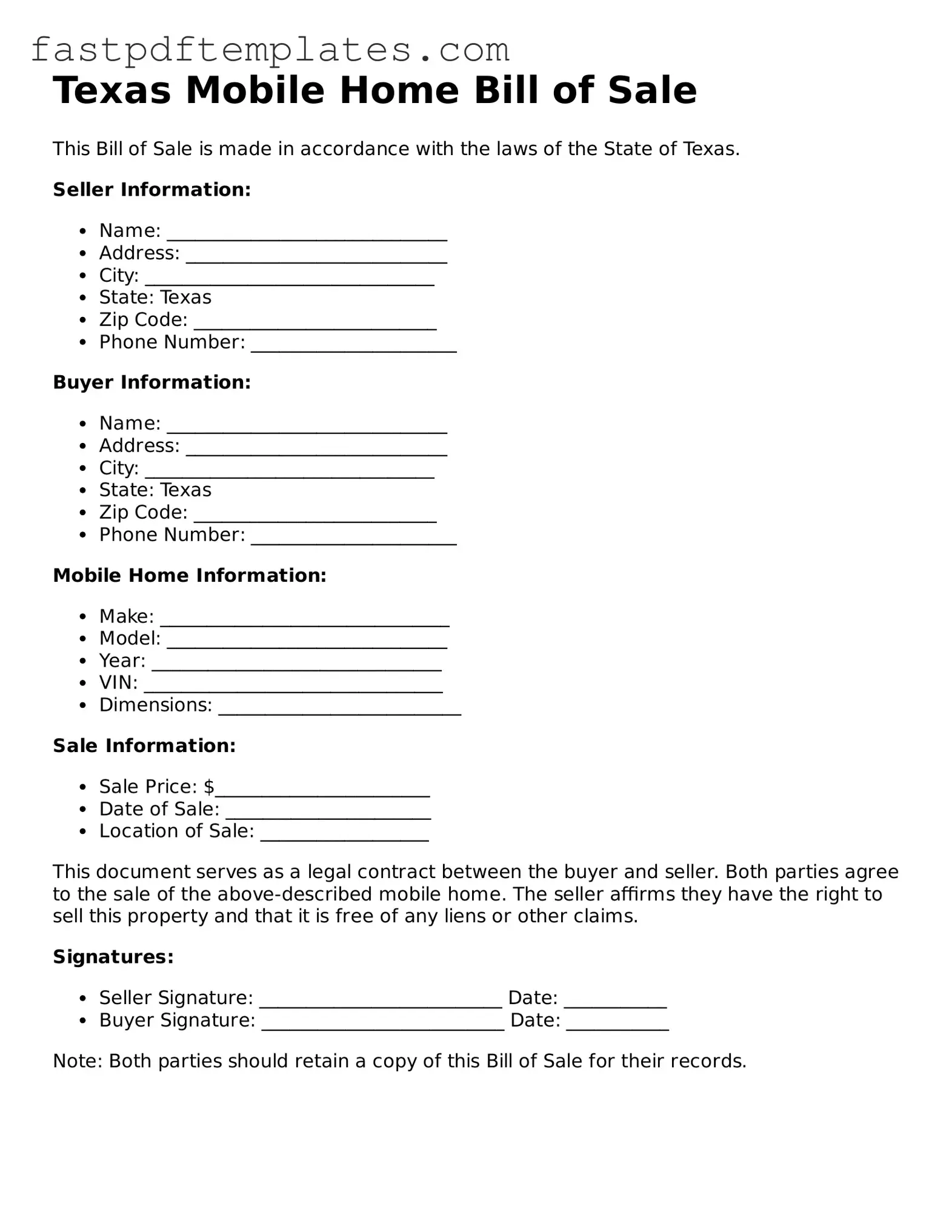The Texas Vehicle Bill of Sale is similar to the Mobile Home Bill of Sale in that both documents serve as proof of transfer of ownership. When a vehicle is sold, the seller provides the buyer with a bill of sale to confirm the transaction. This document typically includes details such as the vehicle identification number (VIN), make, model, and sale price. Just like the Mobile Home Bill of Sale, it protects both parties by documenting the sale and can be used for registration purposes.
The Boat Bill of Sale functions in a similar manner to the Mobile Home Bill of Sale. When a boat is sold, the seller gives the buyer a bill of sale that outlines the specifics of the transaction. This document includes information about the boat, such as its hull identification number (HIN), make, model, and sale price. Both documents provide a legal record of ownership transfer and can be essential for future registrations or claims.
The Firearm Bill of Sale is also akin to the Mobile Home Bill of Sale. This document is utilized when firearms are sold, capturing essential details such as the make, model, and serial number of the firearm, along with the buyer and seller's information. Both documents serve to formalize the sale, providing a record that can help in legal situations or ownership disputes.
The Trailer Bill of Sale shares similarities with the Mobile Home Bill of Sale as well. This document is used to confirm the sale of a trailer, detailing its specifications, such as size, weight, and identification number. Both documents are crucial for establishing ownership and can be necessary for registration with state authorities, ensuring compliance with local laws.
The ATV Bill of Sale is comparable to the Mobile Home Bill of Sale in that it documents the sale of an all-terrain vehicle. This form includes vital information about the ATV, such as its make, model, and VIN. Like the Mobile Home Bill of Sale, it serves as a legal record of ownership transfer and can be critical for registration and insurance purposes.
The Motorcycle Bill of Sale is another document that resembles the Mobile Home Bill of Sale. This form is essential for documenting the sale of a motorcycle, including details such as the VIN, make, model, and sale price. Both documents provide protection for the buyer and seller by ensuring that the transaction is formally recorded, which can help prevent future disputes regarding ownership.
The Equipment Bill of Sale is similar to the Mobile Home Bill of Sale in that it is used for the sale of various types of equipment, such as construction or farming machinery. This document details the specifics of the equipment being sold, including its condition and any relevant serial numbers. Both documents serve to establish a clear record of the transaction, protecting both parties involved.
Lastly, the Personal Property Bill of Sale is akin to the Mobile Home Bill of Sale in that it can be used for the sale of any personal property that is not real estate. This document outlines the details of the transaction, including a description of the item sold and the sale price. Both forms provide a legal framework for ownership transfer, ensuring that both the buyer and seller have a record of the agreement.
